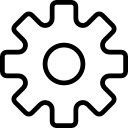






















Progettare e implementare una struttura del portale aziendale usando oggetti SharePoint 2016: siti, librerie, elenchi e pagine
Spiegare il ruolo della protezione e delle autorizzazioni in SharePoint 2016
Implementare le linee guida per la coerenza nella creazione di un portale aziendale per aiutare nella gestione quotidiana dei contenuti in SharePoint 2016
Migliorare il design e il contenuto di un portale aziendale utilizzando le pagine e le web parts di SharePoint 2016
Spiegare l 'importanza della governance per la pianificazione e la gestione della crescita futura dell'implementazione SharePoint 2016
Identificare le opzioni per integrare i dati da altri sistemi come Microsoft Office e conservare i dati esistenti
Spiegare il ruolo dei social network in SharePoint 2016 e il loro impatto sulla collaborazione
Conoscenza di un sistema operativo client Windows - Windows XP, Windows 7, Windows 8 o Windows 10
Conoscenza di Microsoft Office 2007, Office 2010, Office 2013 o Office 2016
Conoscenza di Microsoft Internet Explorer 7 o versione successiva o un browser web simile
Familiarità con le versioni precedenti di SharePoint, preferibile ma non necessaria.
Module 1: Getting Started with SharePoint 2016
Exploring SharePoint 2016 Site Collection and Site Administrator Roles
Defining SharePoint Terminology
Navigating a SharePoint Site
Interacting with the Ribbon
Creating and Editing Basic Content
What is Metadata?
Versions of SharePoint
Standard
Enterprise
O365
Module 2: Building a Site Collection with Apps
The Structure of SharePoint
Creating a Site
What does a site template come with?
Defining SharePoint Apps
Customizing Lists and Libraries
Creating/Managing Lists and Libraries through SharePoint Designer
Explaining Views on Lists and Libraries
Creating Views in Lists and Libraries
Modifying Navigation
Turning Site Features On/Off
Reorganizing a Site using Site Content and Structure feature
Lab : Creating a Structured Company Portal
Create sites as part of a formal site structure
Create new apps for documents and lists
Enable versioning and content approval settings on libraries or lists
Customize views on libraries or lists
Configure navigation to hide lists and libraries
Lab : Creating a List Using SharePoint Designer (Optional)
Module 3: Creating Consistency across Sites
Defining Site Columns
Defining Content Types
Implementing a Taxonomy
Using Templates to Promote Consistency
Lab : Creating Site Columns and Content Types
Design and implement content types
Create new site columns
Create a library or list template (optional)
Lab : Implementing a Taxonomy
Design and create taxonomy
Add managed metadata columns
Lab : Configuring the Content Organizer
Customize default column values on a per-folder basis
Provision and configure the Content Organizer for automated document routing
Module 4: SharePoint Permissions
Explaining Permissions and Security in SharePoint
Creating SharePoint Groups
Managing Permissions within SharePoint
Sharing versus Traditional Security
Sharing as different permission levels
Lab : Managing Permissions in SharePoint
View permissions of SharePoint objects
Add users and groups to SharePoint objects
Create a new SharePoint managers group with customized permissions
Stop inheriting permissions between SharePoint objects
Module 5: Working with Pages and Web Parts
Changing the Appearance of the Portal
Editing a Page
wiki
web part
Working with Web Parts and App Parts
App Parts
Content Search Web Part
Relevant Documents
Content query
Table of Contents
Pictures
Web Part Connections
Filter web parts
Web parts with Targeting Audience
Lab : Adding and Configuring Web Parts
Create custom content types for publishing
Create a list template
Create a managed property
Use Content Search Web Part
Lab : Connecting Web Parts
Place web parts on a page
Connect web parts on a page to pass values between them
Lab : Applying Themes to Your Company Portal
Customize and apply a theme to your portal
Add a logo to your portal
Module 6: Document and Records Management
Basic Content Approval
Versioning
Check In/Out
Holds
Retention Policy
Document ID
Content Organizer
Compliance Policy Center Site Template
EDiscovery
Records Center
Lab : Working with Advanced Document Management Features
Lab : Leveraging Records Management to Preserve Data
Configure a Records Center to house documents requiring a hold
Configure in-place records on libraries
Set up and leverage an eDiscovery Center
Module 7: Workflow
Alerts
Out of the Box Workflow
Activating Workflow Features
Approval Workflow
Creating a Workflow in SharePoint Designer
Lab : Creating an Approval Workflow from SharePoint
Lab : Creating a Custom Workflow in SharePoint Designer (Optional)
Module 8: Office Integration
Outlook
Calendar
Contacts
Excel
Word
PowerPoint
OneDrive for Business
OneNote
Access
Lab : Importing and Exporting Excel Data with SharePoint
Lab : Linking Outlook and SharePoint
Module 9: Creating Publishing Sites
Why use a publishing site?
Publishing Pages
Enabling Web Content Management
Managing the Structure of Web Content
Navigating a Site Using Managed Metadata
Lab : Creating a Rich Publishing Sit
Create a web content management site for publishing news
Set up and use image renditions for faster image management
Lab : Configuring a Publishing Approval Process
Add an approval process to your publishing site
Lab : Implementing a Managed Navigation Site
Set up and use the Managed Metadata navigation
Module 10: Bridging the Social Gap
My Sites
Configuring Social Features in SharePoint
Posts, Tags and Mentions
Creating a Community Site
Lab : Designing a Social Experience in SharePoint 2016
Enable content ratings
Configure RSS feeds
Manage user profiles
Lab : Creating a Community Site
Create and configure a community site
Create and manage discussions
Recognize users who contribute to the community
Module 11: Finding Information Using Search
Exploring the Search Features in SharePoint
Configuring Search Settings
Search Analytics
Search Visibility
Lab : Configuring an Advanced Search Center
Module 12: Planning a Company Portal Using SharePoint
Defining SharePoint Governance
Working with Information Architecture
Implementing Site Hierarchies
Discussing the Execution of Governance
Module 13: Site Collection Administrator Settings
Exploring Settings for Site Collection Administrators
Exploring Settings for Site Administrators
Site Closure Policies